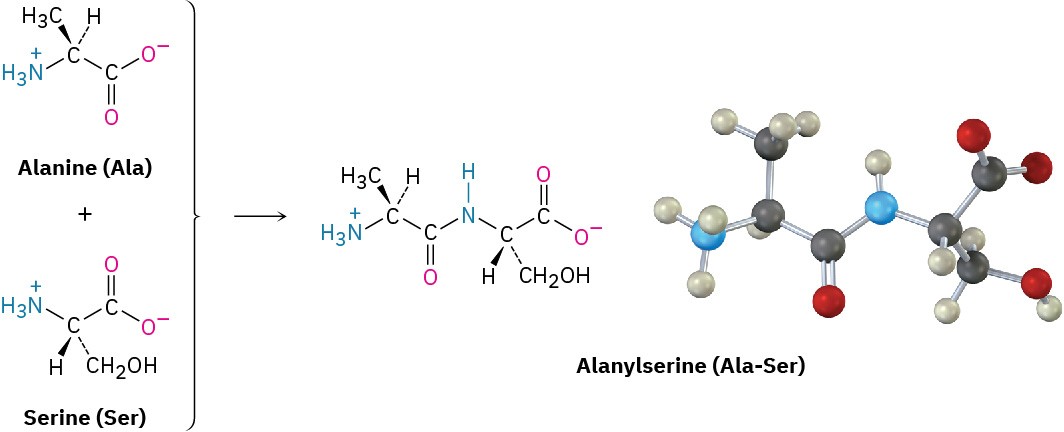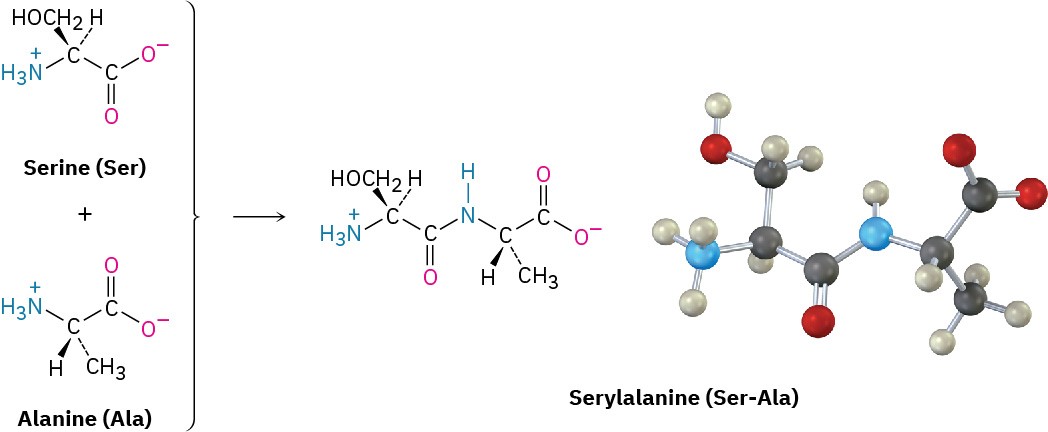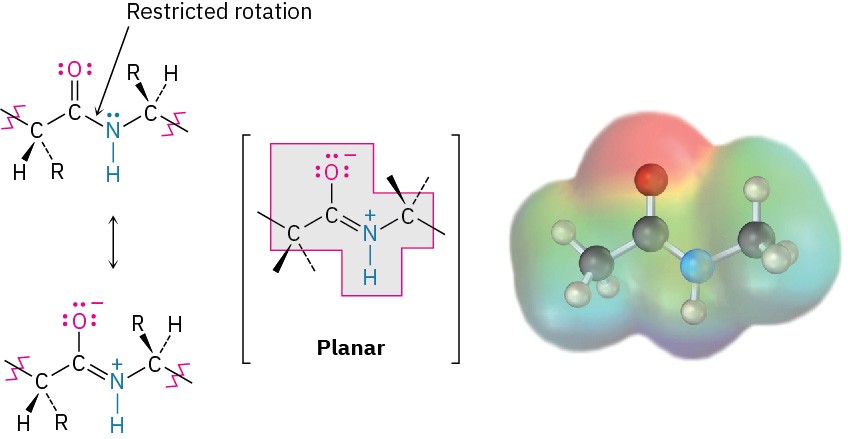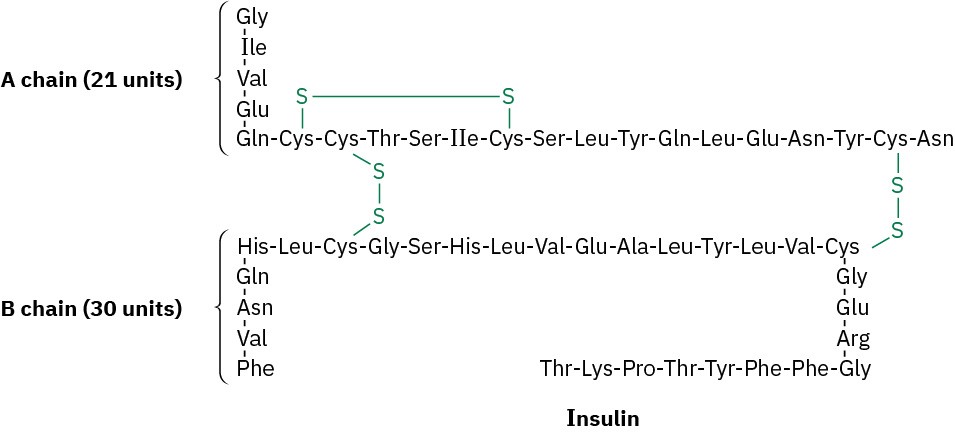26.4 Peptides and Proteins
Proteins and peptides are amino acid polymers in which the individual amino acids, called residues, are linked together by amide bonds, or peptide bonds. An amino group from one residue forms an amide bond with the carboxyl of a second residue, the amino group of the second forms an amide bond with the carboxyl of a third, and so on. For example, alanylserine is the dipeptide that results when an amide bond forms between the alanine carboxyl and the serine amino group.

Note that two dipeptides can result from reaction between alanine and serine, depending on which carboxyl group reacts with which amino group. If the alanine amino group reacts with the serine carboxyl, serylalanine results.

The long, repetitive sequence of –N–CH–CO– atoms that makes up a continuous chain is called the protein’s backbone. By convention, peptides are written with the N-terminal amino acid (the one with the free –NH3+ group) on the left and the C-terminal amino acid (the one with the free –CO2– group) on the right. The name of a peptide is denoted by the abbreviations listed in Table 26.1 for each amino acid. Thus, alanylserine is abbreviated Ala-Ser or A-S, and serylalanine is abbreviated Ser-Ala or S-A. The one-letter abbreviations
are more convenient, though less immediately recognizable, than the three-letter abbreviations.
The amide bond that links amino acids together in peptides is no different from any other amide bond (Section 24.3). An amide nitrogen is nonbasic because its unshared electron pair is delocalized by resonance with the carbonyl group. This overlap of the nitrogen p orbital with the p orbitals of the carbonyl group imparts a certain amount of double-bond character to the C–N bond and restricts rotation around it. The amide bond is therefore planar, and the N–H is oriented 180° to the C═O.

A second kind of covalent bonding in peptides occurs when a disulfide linkage, RS–SR, is formed between two cysteine residues. As we saw in Section 18.7, a disulfide is formed by mild oxidation of a thiol, RSH, and is cleaved by mild reduction.

A disulfide bond between cysteine residues in different peptide chains links the otherwise separate chains together, whereas a disulfide bond between cysteine residues in the same chain forms a loop. Insulin, for instance, is composed of two chains that total 51 amino acids and are linked by two cysteine disulfide bridges.

Problem 26-8
Six isomeric tripeptides contain valine, tyrosine, and glycine. Name them using both three- and one-letter abbreviations.
Problem 26-9
Draw the structure of M-P-V-G, and indicate its amide bonds.

